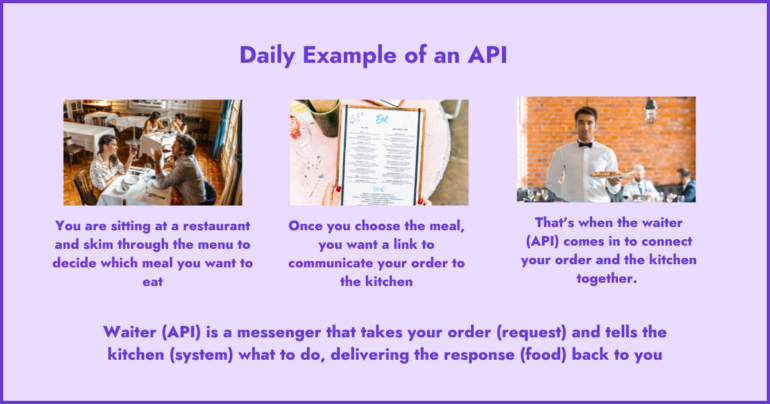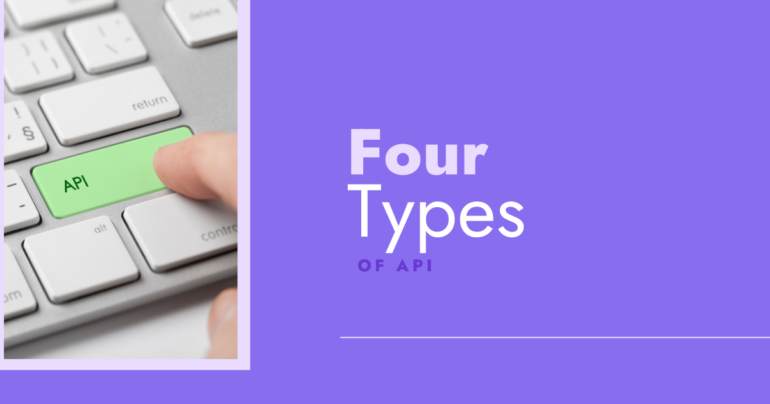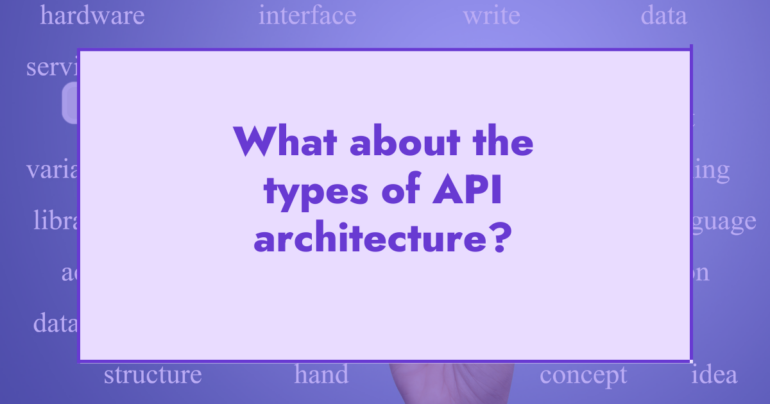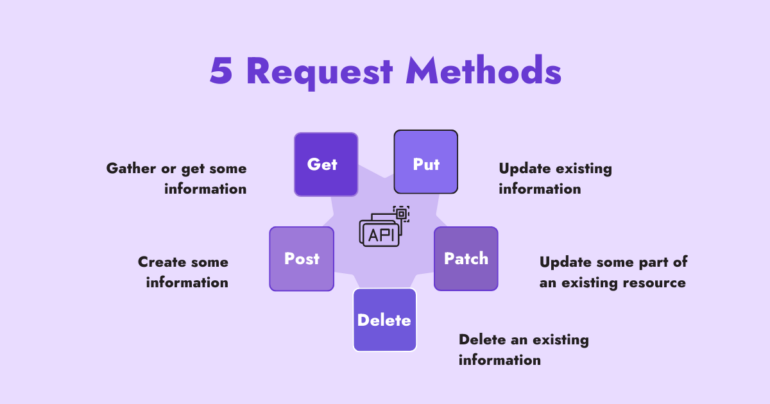When speaking about a website, operating system, or application, many programmers may use the term ‘application programming interface’ or simply API. Have you ever wondered what it is and why it’s so much used by software companies? The world we live in is becoming more and more API-centric. You might not even be aware of it, but APIs are present almost everywhere. It is widely used, has many types and architectural styles, and provides many benefits to developers about which we are going to learn in this blog.
What is an API?
How do you make a reservation or book a flight digitally? This is all through the help of an API. The latter is a way to build communication between two or more computer programs. It’s a collection of functions that enables applications to access data and information to interact with operating systems, software components, or microservices. In other words, it serves as a messenger that receives requests, informs a system of your wishes, and then sends the system’s response back to you. How does an API work? Let’s take a look at a daily example.

So, the API sends your response to a system and then brings the system’s response back to you.
For example, imagine browsing an eCommerce website that sells clothes. You find the shirt you were looking for, pick your favorite color, select your size, and then put it in your shopping cart. When you click ‘add to cart,’ the website receives a notification via an API that you have added a product. Then the system adds the shirt to your cart and updates it so that it displays all of your newly added items if you want to make a purchase. This is all done through the help of an API.
Digi-Tip: If you are an eCommerce business, use APIs to increase revenue, grow your brand, and help customers find your products.
Breaking Down the Term ‘API’
APIs are required to connect apps and carry out a specific function that is based on sharing data and running pre-defined operations. They serve as a go-between, enabling programmers to create new programmatic interactions across many applications that consumers and companies use. Let’s break down the term.

So, now you understand each component of the term. Let’s move on!
What is an API request?
It’s essential to know that a developer can use an API to send or receive data by making a particular “call” or “request.” So, what is an API call? An API request, also known as an API call, is a message sent to a server requesting an API to provide data or a service. An API request is made when a developer calls the server using an endpoint that is added to a URL.
What is an API Endpoint?
A digital location known as an API endpoint is where an API receives inquiries about a particular resource on its server. It’s crucial to understand that endpoints and APIs are two distinct concepts. An endpoint is a part of an API — it is often a uniform resource locator (URL) that specifies where a resource is located on a server. While an API is a set of functions that enables resource sharing between two apps and it uses endpoint URLs to obtain the requested resources.
Types of APIs
When we refer to APIs, we typically mean the subtype of APIs known as web APIs. You can access web APIs through Hypertext Transfer Protocol (HTTP), which is the same protocol used for retrieving and displaying online pages in browsers.

The common types of APIs include:
- Open or public APIs — Any developer can use open APIs that are also referred to as public APIs. The owner of a network-accessible service can provide users with open access by publishing open APIs online and allowing them to be freely shared. Thanks to the open API’s lack of limitations and simple implementation requirements, third parties can easily access the data it provides.
- Partner APIs — Partner APIs are shared externally, but only with parties that are associated professionally with the provider of the API. Since access is restricted to clients with official licenses, partner API security measures are typically more powerful than public APIs. Some companies prefer partner APIs because they desire more control over who may access their resources and more input into how those resources are used.
- Composite APIs — This kind of API integrates many data and service APIs. Developers can combine calls or requests and receive a unified response from many servers by using composite APIs. The latter minimizes the number of total API calls, which leads to better performance, less server load, and overall speedier systems.
Digi-Tip: Digilite’s web developers suggest using a composite API if you require data from various apps or data sources.
- Internal APIs — Companies create these APIs to use in their internal systems. You can use it to increase your team’s output. These APIs are only accessible to internal developers within the company and are designed to speed up data transfers between systems and teams. For internal data transfers, using these APIs is thought to be more secure, effective, and traceable.
Using the right API can allow your company to collaborate with other applications, increasing your influence and reach.

The architecture of an API consists of the rules that specify what data an API can communicate with clients and how it does so. The common types are REST, SOAP, and RPC.
REST is the most popular one thanks to its quick response times, dependability, and capacity to scale by reusing modular components without harming the system as a whole. When talking about web APIs, we typically refer to the REST API subtype, which uses HTTP methods to instruct the API on what action to perform.

API Development
Although there are many technologies and tools for API design, the following are the most widely used ones for API development:
- APIMatic and API Transformer
- API Serverless Architecture
- Apigee
- API Science
- Auth0
- GitHub
- API-Platform, etc.
Why Do You Need an API?
Before understanding why you need an API, let’s discover some details about another common phrase, ‘API integration’, which is crucial in this digital world. What is API integration? API integration makes it possible for systems to exchange data sources by connecting two or more apps through their respective APIs.
In other words, through their APIs, you allow two web tools or applications to communicate with one another. Organizations can link existing apps, improve data sharing efficiency, and automate systems. In the current world, businesses cannot ignore the significance of API integration. They provide a seamless and ongoing connection between diverse programs, enabling workers to make use of several cloud-based apps and fostering product innovation. Here are some other reasons why you need an API:
- An API can give the data required without needing additional investigation.
- They assist companies with a range of responsibilities, from streamlining their backend to giving their clients a simpler way to interact.
- Companies can make their systems accessible by third-party websites and apps thanks to APIs.
- APIs enable developers to work more efficiently by allowing them to reuse code in complicated yet repetitive processes.
Now you know all the essentials about the API and why you need one. Don’t forget to get in touch with the best app developers in Glendale to upgrade your website.




